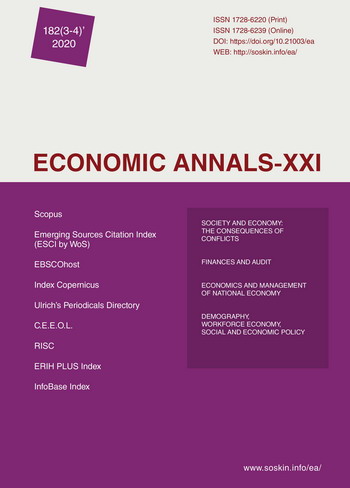Minimum subsistence level in the social policy of the poor countries of Europe: the case of Ukraine
Minimum subsistence level in the social policy of the poor countries of Europe: the case of Ukraine
Author(s): Ella LibanovaSubject(s): Economy, National Economy
Published by: Institute of Society Transformation
Keywords: Minimum Subsistence Level; Absolute Poverty Line; Salary; Wage; State Social Guarantees; Poverty; Norm of Consumption; Social Assistance; Poor Country;
Summary/Abstract: The category of «minimum subsistence level» (SL), also referred to as «absolute poverty line», is one of the fundamental in the socio-economic policy of the modern country. The majority of social transfers depends on the size of the minimum subsistence level, i.e., the level of state support for vulnerable groups of the population; SL is the basis for setting a number of salaries in the budgetary sphere and, accordingly, the amount of tax revenues; the practice is common of reconciling the size of the minimum wage and the maximum level of income from which contributions to compulsory state social insurance are paid with SL. Thus, the SL forms a significant part of budget expenditures and at the same time revenues in the public finance system.The article presents the results of systematization of the principles and methods of calculating SL adopted in different countries. In particular, the characteristics of normative, structural and normative, statistical, resource-based and subjective approaches are given. Considering the well-founded claims to the current methodology for determining SL in Ukraine, the urgent need for its transformation is emphasized and the author’s vision of innovations is highlighted. The rationale is provided for introducing a structural and normative approach for the analysis, monitoring and forecasting of social development and welfare, differentiated by age groups, determined in accordance with participation in education and the labour market. The necessity is emphasized of: developing the norms of food consumption exclusively by medical specialists; using different SL structures; transition to the calculations of SL of the households with a separate definition of the so-called semi-fixed costs (at the level of 20-30% of the food component of a person aged 20-64), which eliminates the use of disputable scales of equivalence.For the purpose of social assistance and calculation of its amount, it is proposed to focus on 40% of the median official salary. The argument is that payouts from the budget depend on the revenues, i.e., taxes on legal wages, and, moreover, this is the threshold accepted in many European countries.The article provides examples of SL calculations, in particular, with the definition of the impact of various methodological schemes on the level and depth of poverty in the country, on the structure of the poor.As the final result the proposals are given for the use of SL in public policy.
Journal: Економічний часопис - ХХІ
- Issue Year: 182/2020
- Issue No: 03+04
- Page Range: 117-125
- Page Count: 9
- Language: English

